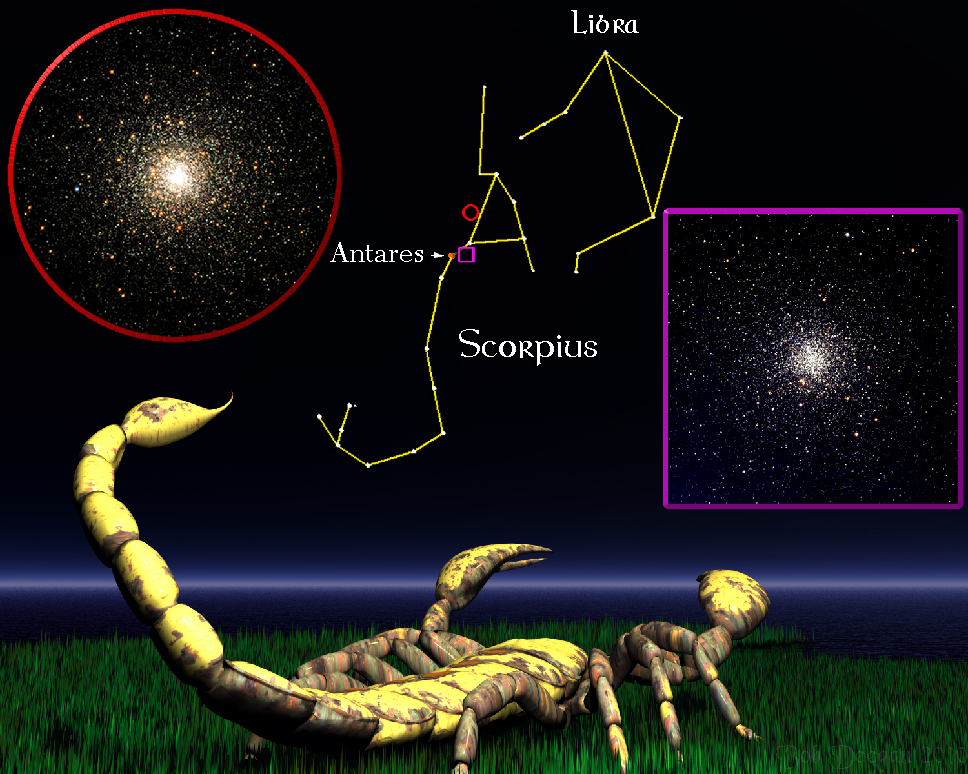
For the week including July 9, 2010

THE SCORPION
As the nights grow warm it’s a great time to be out under the stars and the constellations of the south provide a wealth of deep sky objects that are easily found with binoculars or a small telescope. Around 10pm, Scorpius, the Scorpion, is an easy target for amateur astronomers. Poised just above the southern horizon, it’s a great place to start an observer’s evening.
The best way to begin is with the magnificent red-giant star Antares that forms the heart of the Scorpion. If you place this bright star at the left edge of a binocular field of view, you will see the tremendous ball of stars called M4. Shown in the Kitt Peak National Observatory photograph at lower right, M4 is a globular cluster. A globular cluster is a large group of stars that evolved together and are bound by gravitational attraction. These clusters, which orbit the outskirts of our galaxy, are most often seen in the direction of the Milky Way’s center located in Sagittarius, another southern, summer constellation. M4, at 7,000 light years, is probably the closest of the globulars that orbit the outskirts of our galaxy. On very clear dark nights you can even pick it out with the naked eye. One of the outstanding features of M4 visible in binoculars or telescope is its very loose structure. Some astronomers believe that M4 is gradually dissipating and that in a billion years or so its stars will have spread so far away from each other that it will be hard to identify its original nature.
Although the stars of a globular cluster evolve together, they are not all the same. A hint at the variety of stars contained in a globular cluster can be gained by looking at the recent Hubble Space Telescope photograph shown at upper left. The subject of the photo is the globular cluster M80, cousin to M4. M80 is a very dense cluster holding several hundred thousand stars. The rich detail provided by the Hubble shows a very large number of old red giant stars distributed throughout the cluster. These immense stars, with hues that range from light orange to crimson are favorites of amateur and professional astronomers alike. The red giants begin as fairly average stars, but as they enter the final stages of their life span, they expand in size and become the largest class of stars in the universe. In 1860 a nova occurred in M80 that became so bright it outshone the combined luminosity of all the stars in the cluster. Even with the lower magnifying power of home telescopes the features of M80 have a beauty of their own. In some telescopes M80 has the ghostly appearance of a distant comet an attribute which, hundreds of years ago, earned this cluster a title of “The False Comet of Scorpius”.
Unless otherwise indicated, all content of this web site is the copyright of Robert Deegan and all rights are reserved.
For more information, or to comment, please contact: Bob@NightSkies.org